News Archive
Filter By
- Abyssinian ground hornbill
- Addax
- Aldabra tortoise
- Allen's swamp monkey
- Alpaca
- American alligator
- American avocet
- American bison
- American flamingo
- American wigeon
- Andean bear
- Aquatic caecilian
- Arapaima
- Asian elephant
- Asian small-clawed otter
- Asian water dragon
- Australian snake-necked turtle
- Bald eagle
- Baltimore oriole
- Barred owl
- Bearded emperor tamarin
- Beaver
- Bennett's wallaby
- Binturong
- Black-and-white ruffed lemur
- Black-and-white warbler
- Black-crowned night heron
- Black-footed ferret
- Black-tailed prairie dog
- Black-throated blue warbler
- Blue-billed curassow
- Blue crane
- Bobcat
- Brown pelican
- Bufflehead
- California sea lion
- Canvasback
- Cedar waxwing
- Channel catfish
- Cheetah
- Chicken
- Chinese alligator
- Chinese three-striped box turtle
- Clouded leopard
- Collared brown lemur
- Common raven
- Common yellowthroat
- Corals and sea anemones (anthozoa)
- Cow
- Crocodile monitor
- Cuban crocodile
- Dama gazelle
- Degu
- Dunlin
- Eastern indigo snake
- Eastern newt
- Eastern red-backed salamander
- Eastern screech-owl
- Eld's deer
- Electric eel
- Emperor newt
- Fennec fox
- Fishing cat
- Gaboon viper
- Geoffroy's marmoset
- Gharial
- Giant leaf-tailed gecko
- Giant panda
- Goat
- Golden-headed lion tamarin
- Golden lion tamarin
- Gray seal
- Gray wolf
- Green tree python
- Grevy's zebra
- Guam kingfisher (sihek)
- Guam rail (ko’ko’)
- Guinea pig
- Harbor seal
- Hartmann's mountain zebra
- Hawk-headed parrot
- Hellbender
- Home's hinge-back tortoise
- Hooded crane
- Iranian fat-tailed gecko
- Japanese giant salamander
- King vulture
- Komodo dragon
- Kori bustard
- Kunekune pig
- Land hermit crab
- Larger Malay mouse-deer
- Lemur leaf frog
- Lesser hedgehog tenrec
- Lesser kudu
- Linné's two-toed sloth
- Lion
- Loggerhead shrike
- Long-tailed chinchilla
- Long-tailed salamander
- Maned wolf
- Meerkat
- Miniature donkey
- Naked mole-rat
- North American porcupine
- North American river otter
- Northern Luzon giant cloud rat
- Northern pintail
- Northern red salamander
- Northern snakehead fish
- Northern tree shrew
- North Island brown kiwi
- Norway rat
- Orangutan
- Orchard oriole
- Ossabaw Island hog
- Ostrich
- Ovenbird
- Pallas's cat
- Panamanian golden frog
- Patagonian mara
- Persian onager
- Philippine crocodile
- Prehensile-tailed porcupine
- Prevost's squirrel
- Przewalski's horse
- Pygmy slow loris
- Red-crowned crane
- Red-fronted lemur
- Red-rumped agouti
- Red-winged blackbird
- Red knot
- Red panda
- Red River hog
- Red ruffed lemur
- Red wolf
- Ring-tailed lemur
- Ruddy duck
- Schmidt's red-tailed monkey
- Scimitar-horned oryx
- Screaming hairy armadillo
- Semipalmated plover
- Semipalmated sandpiper
- Siamang
- Sitatunga
- Sloth bear
- Southern lesser galago
- Southern swamp sparrow
- Southern tamandua
- Spider tortoise
- Striped skunk
- Swainson's thrush
- Tanagers
- Tentacled snake
- Tiger
- Titi monkey
- Turkey
- Twig catfish
- Vietnamese mossy frog
- Virginia opossum
- Von der Decken's hornbill
- Western lowland gorilla
- White-cheeked gibbon
- White-faced saki
- White-naped crane
- White-nosed coati
- Whooping crane
- Yellow-breasted chat
Displaying 1001 - 1025 of 2364 articles.
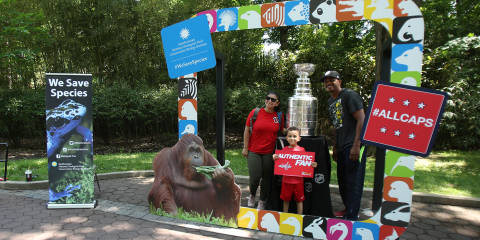
The Zoo Celebrates NHL Hockey Finals
In honor of the Washington, D.C. Capitals making the NHL finals, the Smithsonian's National Zoo's giant panda Tian Tian was given a special treat of a bamboo hockey stick, ice puck and a fruitsicle star!
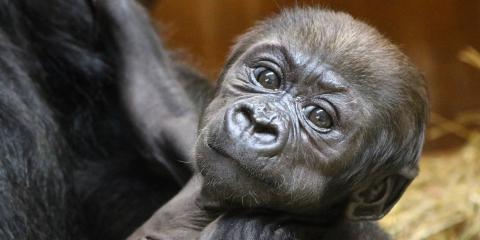
#GorillaStory: Moke, Calaya and Kojo
At six weeks old, western lowland gorilla Moke is already showing interest in exploring his surroundings. Despite his adventurous spirit, mom Calaya continues to hold her infant close.
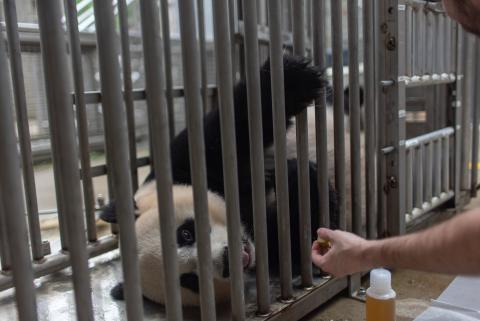
Panda Update: June 1, 2018
It’s been almost three months since Mei Xiang was artificially inseminated. Keepers, veterinarians and Smithsonian Conservation Biology Institute scientists have been monitoring her carefully ever since.
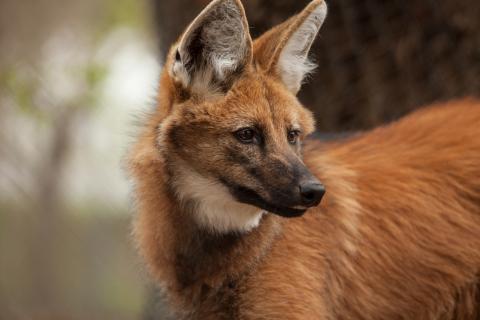
Maned Wolf Matchmaking
Maned wolves in the North American population have their own matchmaker. Nucharin Songsasen is a biologist at SCBI and Species Survival Plan coordinator. It's her job to decide which animals to breed based on their genetics, personality and health, among other traits.
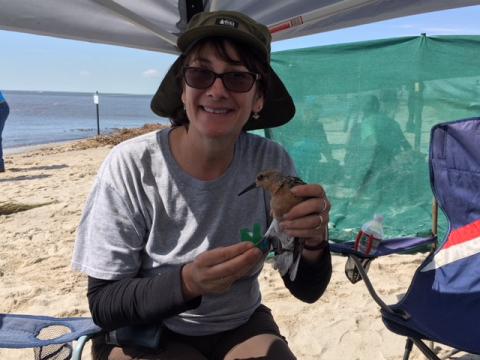
Field Notes: Migration at the Delaware Bay
While most people flock to the Delaware shores for some rest and relaxation, migratory birds have an entirely different mindset during their visit: refuel. The Delaware Bay is a key stopover site for red knots, sanderlings, ruddy turnstones and other birds who pause their marvelous migrations to...
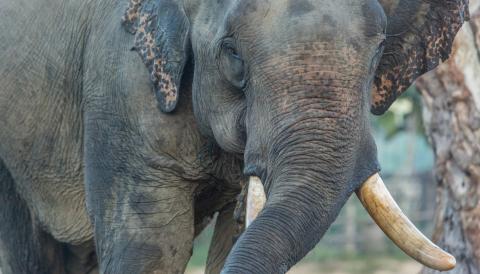
Wild Personalities: Elephant Edition
Learn all about studying elephant personalities in this Q&A with Shifra Goldenberg, a research associate with the Smithsonian Conservation Biology Institute’s Conservation Ecology Center.
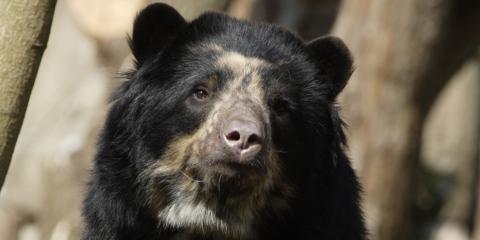
Woo at the Zoo: Andean Bears
When animal keepers introduced Andean bears Billie Jean and Quito earlier this spring, it seemed that love was in the air. Or, was it hormones? To discover how hormones can affect a bear’s behavior during breeding season, keeper Sara Colandrea has teamed up with Smithsonian Conservation Biology...
Extinct-in-the-Wild Bird Hatches at Smithsonian Conservation Biology Institute
A female Guam kingfisher, one of the planet's most endangered bird species, hatched at the Smithsonian Conservation Biology Institute on May 17.
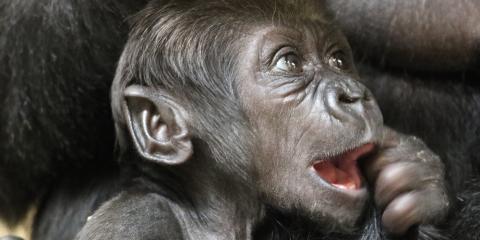
#GorillaStory: Curious Moke
At 5 weeks old, western lowland gorilla infant Moke continues to thrive, and keepers are beginning to see how his personality is developing. He is very curious and wiggly!
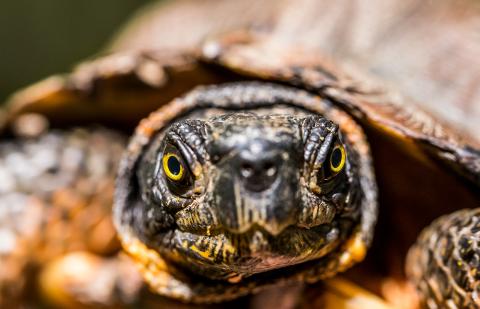
Does Slow and Steady Win the Race?
The hare may be quicker than the turtle, but does it actually move more? Smithsonian researchers are tracking wood turtles to better understand how they navigate their environment.
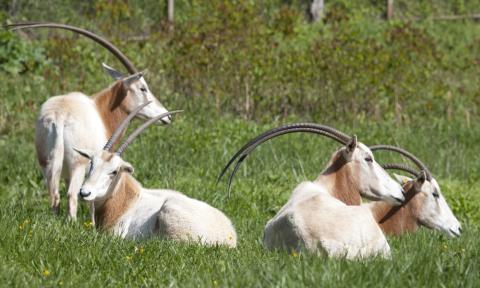
Today Is Endangered Species Day
The Smithsonian’s National Zoo and Conservation Biology Institute is dedicated to saving species. Every day, its scientists and partners undertake important conservation efforts to protect species and their habitats.
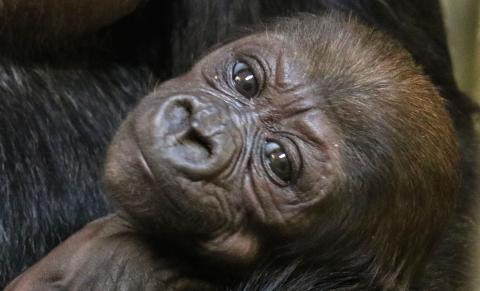
#GorillaStory: Moke Is One Month Old
Western lowland gorilla infant Moke turned one month old on Tuesday! He continues to do well and remains bright and alert.
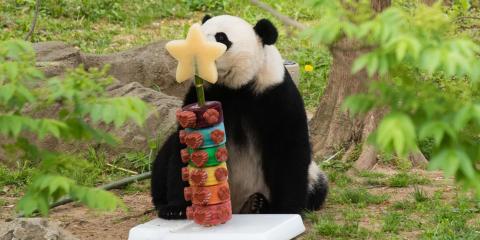
International Family Equality Day
On May 6, the Smithsonian’s National Zoo and Conservation Biology Institute welcomed thousands of visitors to celebrate community and diversity in recognition of International Family Equality Day.
Smithsonian’s National Zoo’s Holstein Calf is Named Magnolia
Just in time for her public debut, the Smithsonian’s National Zoo and Conservation Biology Institute’s female Holstein calf has a name: Magnolia.
Smithsonian’s National Zoo Asks Public To Name Female Holstein Calf
The Smithsonian’s National Zoo and Conservation Biology Institute is inviting the public to name the newest member of the Kids’ Farm herd—an 8-month-old female Holstein calf. Starting today, May 11, fans can vote on the Zoo’s website for their favorite among three floral names: Magnolia, Hyacinth...
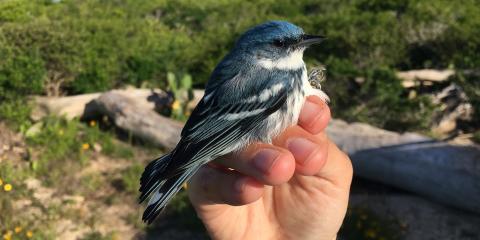
From the Field: Bird Banding on Texas’ Gulf Coast, Chapter 2
In Texas, a team of Smithsonian Migratory Bird Center scientists is studying birds that travel through the Gulf of Mexico.
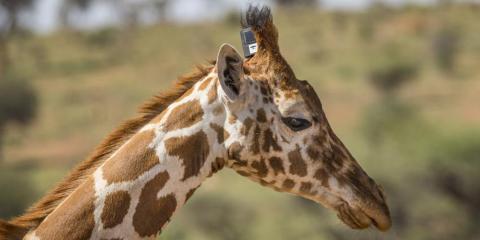
The Mysterious Disappearance of Reticulated Giraffes
What is causing the disappearance of reticulated giraffes across the plains where they were once plentiful? Smithsonian Conservation Biology Institute scientists and partners are on the case.
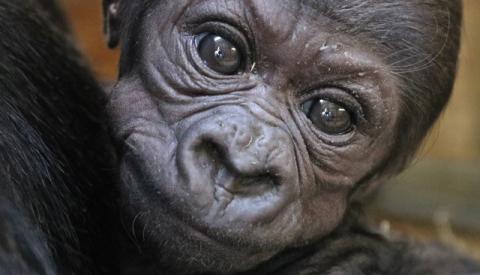
#GorillaStory: A Growing Gorilla
At almost 3 weeks old, western lowland gorilla infant Moke is growing quickly and is starting to take in his surroundings.

How to Train a Coati
Two-year-old coati sisters Quinn and Ivy are always on the move. Find out how their keeper trained them to sit still and voluntarily participate in their own care.
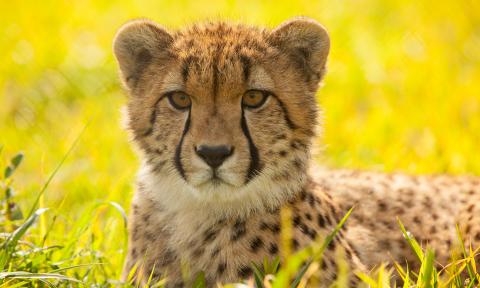
Why Do Cheetahs Have Spots? And Other Cheetah Facts
Discover the answers to some of the most-searched questions about these lightning-fast cats!
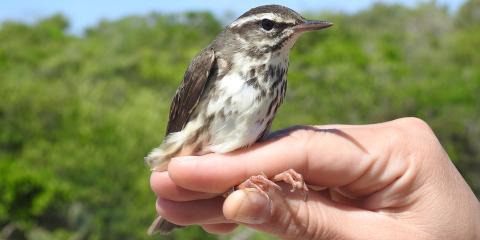
From the Field: Bird Banding on Texas’ Gulf Coast, Chapter 1
In March, a team of Smithsonian Migratory Bird Center scientists traveled to Texas to begin their annual study of birds that travel through the Gulf of Mexico.
